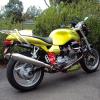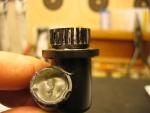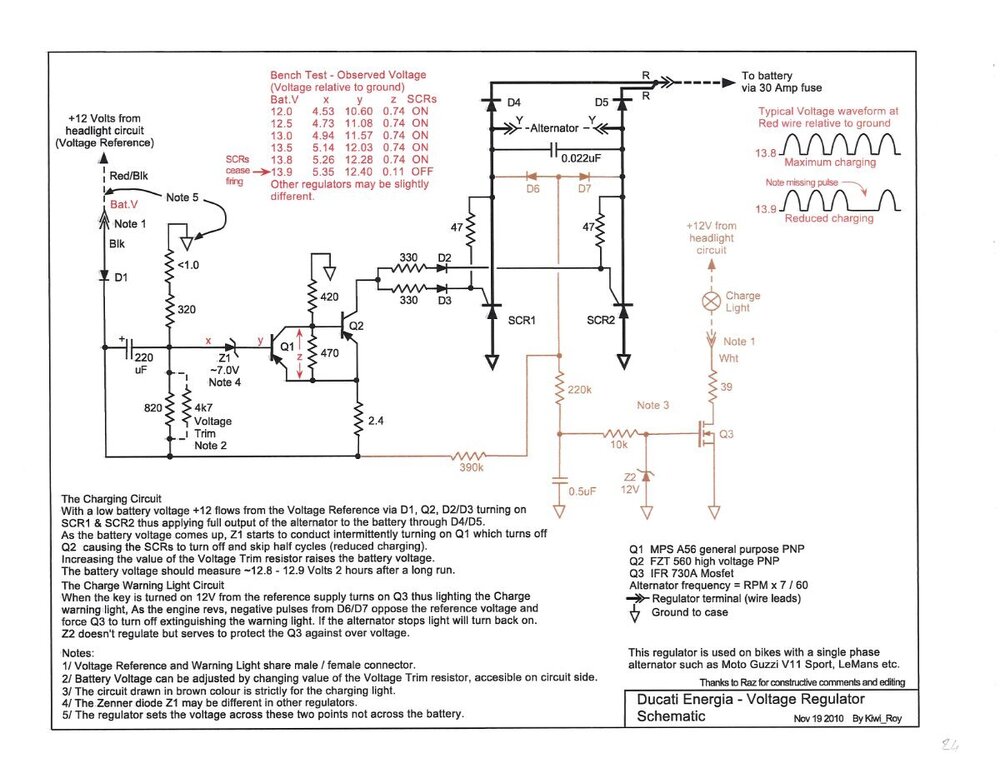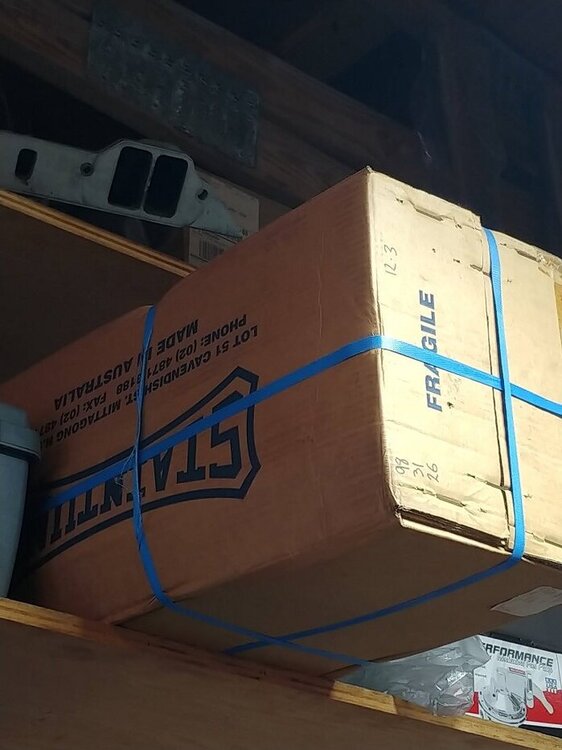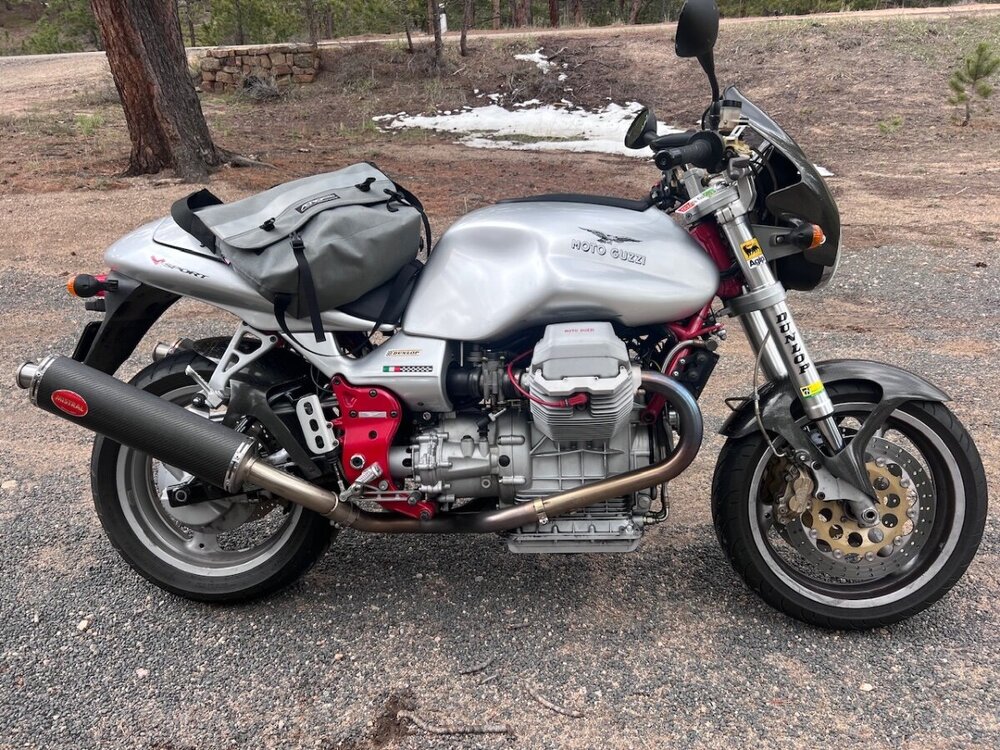Leaderboard
Popular Content
Showing content with the highest reputation on 09/18/2025 in all areas
-
That would be more to my liking. A wider difference between the two numbers means the oil relies more heavily on viscosity modifiers. Viscosity modifiers are complex molecules that coil up when cold and uncoil when they get hot. They are prone to shear, to being cut up, in use. As they get cut up they stop doing what they do. In essence, an oil with a larger gap between the two numbers will breakdown quicker. When you see an oil like 10w-60, it is a 10 weight oil with viscosity modifiers to give it the performance of a 60 weight oil when hot. But those viscosity modifiers that give it the 60 weight when hot aren't as stable and long lasting as the rest of the oil is. So as it gets older under use it gets thinner and thinner when hot. It takes more viscosity modifiers to make a 10w-60 oil then it does a 20w-50 oil. That said, you can't go wrong using the oil they recommend. I don't agree with their recommendation, but it is their recommendation.4 points
-
4 points
-
Just as a point of reference I had a customer I sold a new 8V Griso to way back when. It got its first service and its 10,000km service with me and he then moved away and there was nowhere nearby to service it. Now he really is a mechanical neophyte and didn’t to anything to it. He got in contact with me a few years later and asked if he could bring it in for a service, I said yes of course. Anyway when I was working on it I noticed the engine was absolutely filthy on the inside! What I drained out of it was absolutely gross! When he picked it up I asked him when he’d last changed the oil. He looked kind of sheepish and said “Never, I just topped it up when it dropped off the stick!” At that point it had done nearly 90,000 Km!!! Thing is, apart from being filthy everything else that I could check seemed fine! I got the chance to explore further about 30,000 Km later when it dropped a valve and destroyed a head, barrel and piston but whether the guide wear that promoted that was related I have no idea, the 8V’s do use valve guide oil seals after all. The whole engine as in remarkably good shape! The long and the short of it is Guzzis tend to be monstrously over-built and modern oils are very, very good at their job and last extraordinarily well. I have always used Penrite 10/60 in everything I’ve owned built this century and nothing has blown up yet. That seems like a good enough reason not to change. To my mind the 10,000km service interval is very conservative but draining the gribblies out is always good, it’s not particulates generally it’s the crap and byproducts of combustion that need to be got rid of.3 points
-
Oil breaks down in two directions as it gets used. As the viscosity modifiers breakdown the oil gets thinner when hot. This generally doesn't affect the oil when cold, the cold viscosity doesn't really change as the viscosity modifiers breakdown. The second is as by-products of combustion collect in the oil it tends to get thicker when cold. This has less impact on the oil when hot, mainly affecting cold flow. A third aspect of oil as it is used is that the additives get used up, reducing the protection the additives bring to the party. Things like zinc do what they do in oil by being used up. So whatever amount of zinc an oil starts with, as it is used there will be, over time and use, less zinc. I do agree that the Guzzi V twin is not overly sensitive to oil, especially the 2 valve per cylinder engines. Some of us no doubt put more miles on their motorcycles then I do nowadays, sadly for me. I usually change my motorcycle oil due to age before mileage. Presently I only have one motorcycle that I change the oil based on mileage and not age, and even that one is likely to be changed based on age this time as I just haven't had time to ride enough this year. As always, an oil thread can be a slippery slope. But I am bored.3 points
-
3 points
-
It occurs to me that addressing the charging problem would be primary. Once it is charging, the light behavior may take care of itself.3 points
-
No, just planning the route...I'll probably leave here this weekend and begin the tour early next week. First stop is the alt at 3 corners. Other side of State, but Q in case you know; Can I ride the border from 67 at Ojinaga all the way to El Paso? Do I need to carry more than one spare magazine? OBTW I've never ridden a Tour Glide further than a test ride after repairs. Really not my style.3 points
-
+1 on "Wiggle Testing." The corollary of my supposing that finding the charging fault may fix the light is: affecting the light may reveal the charging fault.2 points
-
So, thanks for the last couple of posts. As I wrote further up, I have decided on the strength of a Guzzi bulletin from some time ago to put 10W60 in all three of mine. The last couple of posts have further confirmed this decision. Why? I don't do an awful lot of miles, I do ride all year. That means also at temperatures around 0°C plus/minus a couple. I do ride more short trips (to work and back) than I do trips out of town. But the trips out of town do happen. So I want a wide range to cover the short, cold trips and the longer trips where the motor gets hot. And I'm not about to start changing the oil twice a year to cover winter conditions differently to summer conditions. So, a wide range oil. If I ever find a 0W60 I might give that a go too. If anyone can see a fault in my logic, I'd be glad to read it, but the argumentation needs to be good. PS: that it is necessary to keep the oil-change interval well within bounds is clear. I've ordered a round tuit to that effect.2 points
-
without asking, it's 100% guaranteed to not get what you're looking for...2 points
-
Nothing ventured, nothing gained my Dad always said. I have seen these for sale maybe twice since I got interested (hooked) on Guzzis, which isn't that long. I think I saw them on Ebay. I forgot if they were black, red or unfinished, but just getting them is the hard part. Getting the color is the easy part. Persistence pays off.2 points
-
Not to steal @LaGrasta's response, but Fuse #4 has its own, separate ring terminal to the battery positive. The regulator's charge to the battery can be changed without affecting the other connections to the battery.2 points
-
Probably the same logic that Guzzi built engines in those days with flywheels the weight of a V8 car engine or used linked brakes or produced an engine with the easiest valves in the world to adjust and gave it hydraulic lifters or used DLC coated lifters that shat themselves because it was the totally wrong tech for the application. You know, that logic. Phil2 points
-
Data, yummy. Watch the charge light, with engine off turn key on and wiggle it around, see if lamp lights or flashes. Do the same while giving the harness the wiggle test at suspected connections.2 points
-
at least everyone is being so helpful...2 points
-
The bolts in this V11 appear to the the same size as the '97 Sport and the '85 Tonti LMIV.2 points
-
I had a customer back in the early 90s who was head of lubrication engineering at Ashland oil. We had just started racing 883s, so of course discussed thoroughly. He said, "All oils are equal for the first 5 minutes". The extended point was that oil breakdown is more relevant to your motor than what you start with. I could write a dissertation, but here are the high points; Low viscosity oil is better for cold starts and tight clearances. Not prone to cavitation when cold. Throws off the crank more easily to lubricate cylinder walls better. High viscosity is better for high temps- because it's thinner at high temp than low viscosity at low temps. Counterintuitive, but often true. Low viscosity oils at high temperatures can burn and scuff off more easily- a situation that has little concern in watercooled engines but hugely important in air cooled engines. So while straight-weight oil is what usually finds it's way into strictly racing engines, it's because their operating conditions are stable. It was true 20-30 years ago that wider W ratings meant the oil broke down more quickly; still true, but not as quickly, and not as completely as before today's supreme quality synthetics. So viscosity breakdown (which usually means the oil thickens at low temps, rather than thins at high) happens well beyond reasonable change intervals. Since I'm in a year-round warm climate, and I rarely ride less than 100 miles at a crack, I use 15w50 Shell Rotella T6 diesel oil as my go-to if I can't source my preferred Klotz V-Twin 15w60. Rotella being a diesel oil still has anti-scuff additives that are gone from gas engine oils, but the detergent package means I change it at 5k miles where the Klotz looks good for 10k. Also, Rotella is half the price of Klotz. At the end of every oil thread, lies the fact that most engines simply don't much care what you put in them if you change it frequently enough.2 points
-
2 points
-
My apologies , the MOSFET Q3 turns the charge light on. When the voltage is satisfied , Q3 turns off and light goes off. forginve my ramblings about difference of potential . This is from a long time ago.2 points
-
I cannot find an image of the earlier bolt, but pretty sure the only change was the finish from the earlier, black phosphate-looking bolts to the later, silver "Geomet corrosion resistant finish " . . . Certainly, this is group of fasteners that would be unfortunate not to be torqued correctly a.k.a. "tight " . . .2 points
-
Incidendtally, @Sam P, with all this dicking around on a bike that is apparently not charging, don't forget to keep an eye on the charge state of the battery, and put it on a tender as necessary. If it is half flat, the fault finding wont get any easier.1 point
-
I'm not convinced about that, although, of course, you may be right. Much thought on the topic has led me to believe that the light might have some intermittant defect that is making it difficult to see how the charging problem is behaving. The "voltage at the battery" values that @Sam P has confirmed, i.e. 13.x key off, 12.3 or so engine running regardless of r.p.m., indicate that it is never charging. The charge lamp, however, indicates that it is only failing to charge at revs above 4k. That is why I want to know whether the regulator is switching the contact for the warning light to ground always, or only at the higher revs, i.e. if the warning lamp is doing what the regulator tells it to do, or if the warning lamp has a fault of its own, independant of the charging problem.1 point
-
Aha…next week I’ll be picking up Tour stops in Dallas and Greenville and Atlanta…then up the scenic way thru Arkansas to Missouri and Kansas. Time permitting I may get a few of the extended Republic of Texas Tour as well and then some more standard stops on the way back! Ojinaga to El Paso…doesn’t look it goes all the way. I’ve only gone the other way to Lajitas along the River road.1 point
-
Yes, at least in the one in Roy's schematic. We don't know for sure how the one from Electrosport that @Sam P has installed works. That's why I suggesed he check resistance between the warning lamp connection on the regulator and ground at key on, engine off, and then with the engine running at various speeds. Seeing what happens there should show what the lamp should be doing, and thereby give an indication of whether the lamp itself has a problem.1 point
-
Yeah, that's where I started too, until Kiwi Roy's schematic showed up. I confused myself and the thread, but hey we're all learning together. I guess I *can* change my charge lamp to LED.1 point
-
Intriguing: 10W-60 full synthetic is the recommended oil for the Norge and Griso...are you suggesting that be 0W-30, 10W-40 or 20W-50 instead?1 point
-
Zinc is considered to be an anti-wear agent. IDK why it has been weaned from oil but it has.1 point
-
1 point
-
1 point
-
We don't have a schematic for the installed Electrosport regulator, so that might be the case. Referring to the @Kiwi_Roy schematic for the original regulator, I understand it that the warning light can only go on when the charging voltage is below the reference voltage. I'll attach another one of Roy's schematics, the same as earlier with notes. Referring to that, the charge warning lamp is switched on by a Mosfet that is switched on by the reference voltage, and switched off when the diodes D6 and D7 leak enough of the reference voltage into the negative phase of the alternator. Assuming that the Electrosport regulator operates in a similar fashion, I can't see how an overcharging situation would cause the charge warning lamp to go on. Maybe the functional principle is different, though, and overcharging could cause the lamp to go on. But then, why doesn't it go on right from "engine start", and why doesn't it light up with key on, engine off?1 point
-
1 point
-
1 point
-
1 point
-
1 point
-
1 point
-
. Over the years,I’ve ridden to the SSR on a Ballabio, Griso, EV, Stornello, V7 III, and Norge! Bill1 point
-
1 point
-
1 point
-
. Just made reservations for Friday and Saturday nights in our "usual" room, 301. Have a moto-spot reserved, too, but may be caging it with Kathi. I have hernia surgery -- my sixth! -- on 7 August. Yes, I am obviously defective. My first such surgery was after my first unplanned dismount ... an honorable "I laid 'er down" -- from a tricycle in San Antonio in 1949! All since have been from lifting things I should have known better to call for help, but, well, didn't. So, as for riding a day or two short of a month after procedure, not sure surgeon will "let" me (or that I'll care about that ), but it may be an issue of reality then, something I do care about. Even if I do ride, Kathi will cage it. I'll store the (selected!) Guzzi in Hiawassee and we'll head out on lengthy "Visit Old Friends in the South" tour. On the way back, I'll retrieve the Guzzi and we'll see how tall the grass is back here by our return. Be all of that as it may, we look forward to our reunion at SSR XXI. Bill1 point
-
I love an optimist. The bikes been out of production for almost 20 years but you're in luck I have a valve cover tree in my yard and I'll pick you some and send them over, lol. Phil0 points




